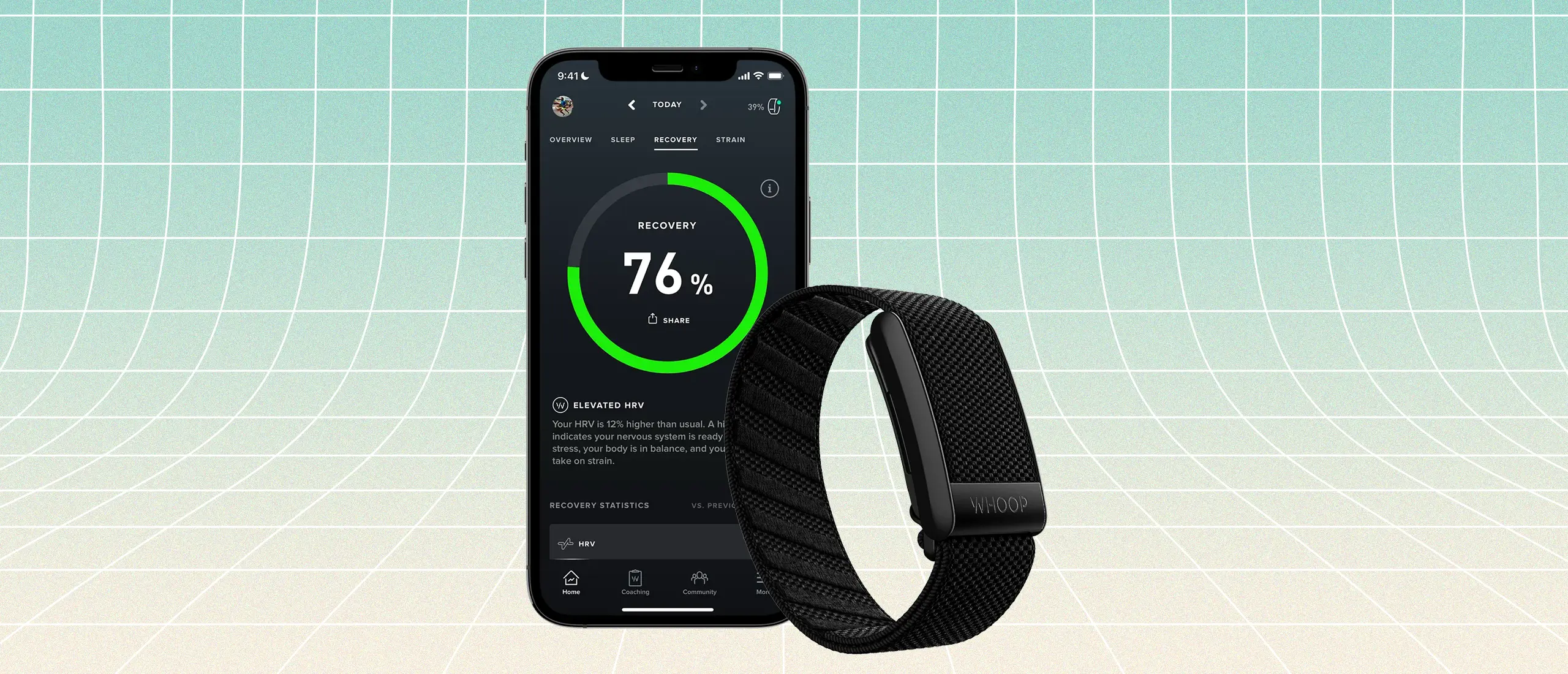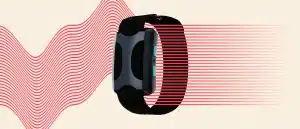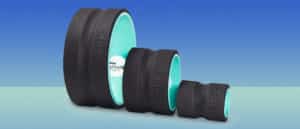Our Honest Review of the WHOOP 4.0 Health Tracker
My journey with health trackers looks a little something like this: First came the Fitbit, followed by the Apple Watch, then an OURA Ring, and finally, the WHOOP 4.0. I’m big on data, and being able to track not only my steps and heart rate throughout the day, but also my sleep, recovery, and body temperature was a huge selling point in my decision to finally test, and review, WHOOP.
WHOOP is different from other health trackers for many reasons. First, the device itself is free (yes, really). You pay a monthly ($30), 12-month ($239), or 24-month ($399) membership fee to gain access to the WHOOP app, which includes personalized insights, built-in coaching features, and weekly and monthly performance reports. Your first month of WHOOP membership access is completely free, which makes gifting it a no-brainer.
Interested in buying or gifting WHOOP? Here’s everything you need to know.
Our Experience
Hone Health is a team of health-obsessed journalists, editors, fitness junkies, medical reviewers, and product testers. As an editor, I have spent seven years testing, researching, and reviewing products in the lifestyle and wellness space. I’m also obsessed with data and performance optimization especially when it comes to my own health. I’ve owned a multitude (too many, really) of fitness trackers and have strong opinions about each.
What Is WHOOP?
Whether this is your first or 81st time hearing of WHOOP, welcome. For those that need a refresher: WHOOP is an all-in-one fitness, recovery, and sleep tracker packed into a sleek wearable that’s waterproof enough to keep on 24/7 (yep, even in the shower). It claims to be more accurate than my previously mentioned roster of trackers thanks to its 5 LEDs and 4 photodiodes that monitor and capture key vital signs (blood oxygen levels, skin temperature, and heart rate metrics) more often than most wearables.
The company is also deeply involved in research with its own dedicated research facility, WHOOP Labs, and a Scientific Advisory Council to ensure all its stats and features are scientifically sound.
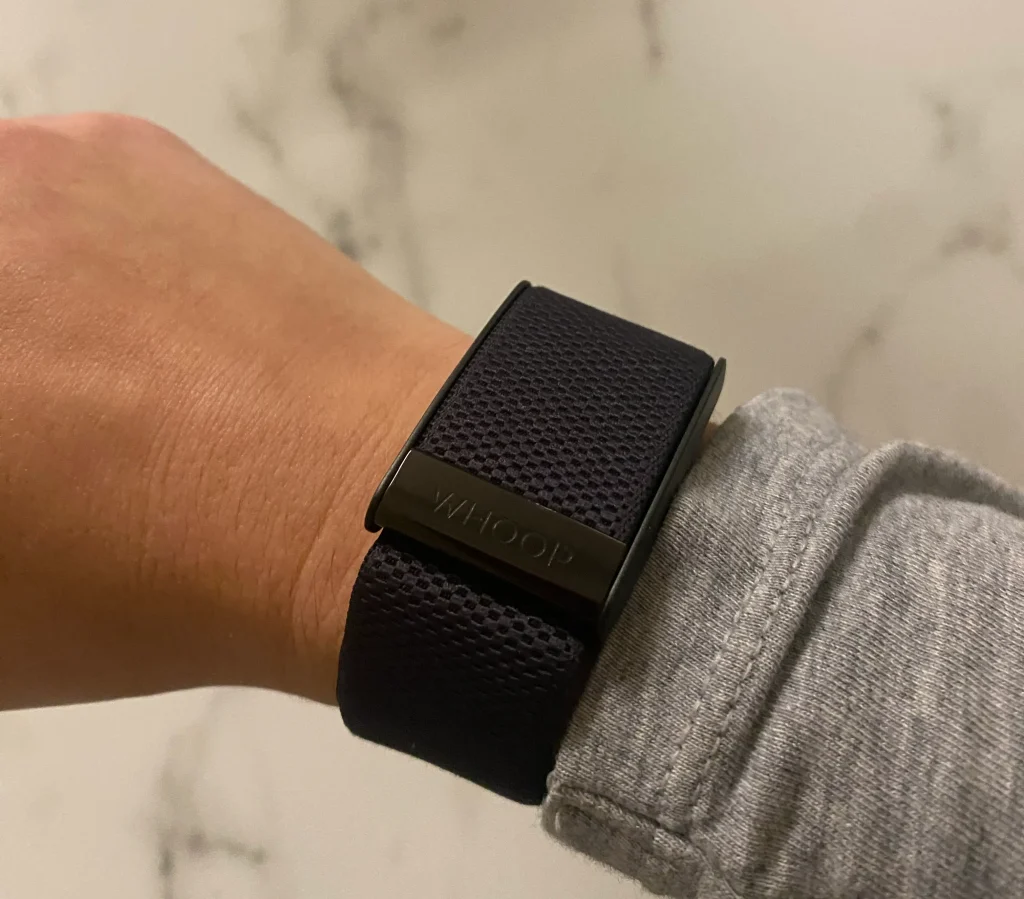
What’s Good About WHOOP?
Robust sleep, recovery, and fitness tracking
WHOOP tracks three main metrics throughout the day: Sleep, recovery, and strain, and gives you a percentage score for each, all viewable in the app.
Sleep
WHOOP uses a range of sensors to measure sleep. It collects data from accelerometers, gyroscopes, a skin temperature sensor, and a heart rate sensor—the heart rate sensor measures blood flow by analyzing changes in blood volume, which gives WHOOP heart rate, heart rate variability, and respiratory rate data, which are vital for accurate sleep detection and staging. In fact, WHOOP is so accurate that heart rate and respiratory rate measurements closely match those from an EKG, according to multiple sleep studies (1).
But the number you care about is called sleep performance. This is determined by a few factors: how many hours you sleep vs. how many hours of sleep you needed to reach peak recovery; your time in bed vs. time actually asleep; restorative sleep (aka deep sleep vs. REM sleep vs. light sleep), and how consistently you stick to your sleep schedule. Every morning, you’ll be able to view your sleep metrics in the app to see how you’re tracking against your 30-day range in things like wake events, efficiency, and respiratory rate.
With all of the above combined, you get a sleep performance score every morning, marked by three color ranges: green, yellow, and red. Green means you hit all of the above marks, yellow typically means you have things to work on, and red means you need to prioritize sleep to maintain your health goals.
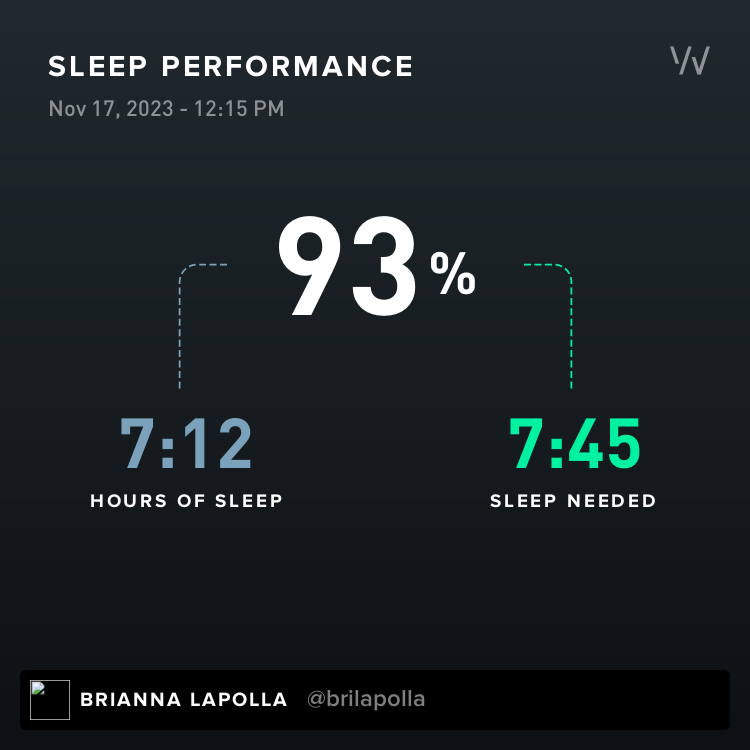
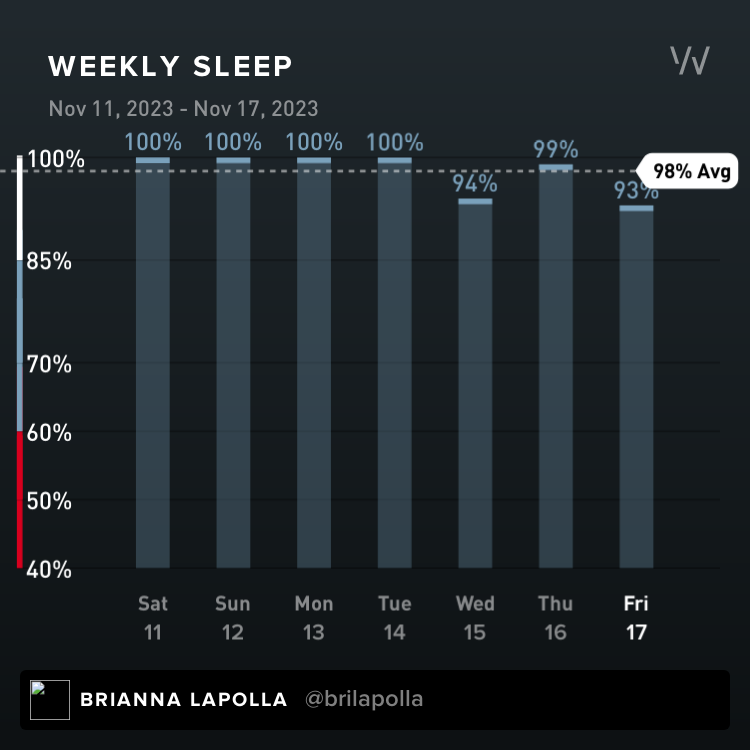
Strain
Strain can be understood as a combination of exercise tracking and daily stressors, not just physical activity. WHOOP measures Strain based on two factors: cardiovascular load and muscular load. According to WHOOP, the cardiovascular load is determined by your heart rate—the higher your heart rate and the longer it stays elevated, the more Strain you accumulate. On the flip side, muscular load is measured using the accelerometer and gyroscope sensors to consider both the volume (the amount of work done) and intensity (the effort or exertion given) of your movements.
“These two loads are then combined logarithmically to give you a complete Strain score. This score reflects the total stress your body takes on throughout the day, from workouts to regular daily activities and even emotional stress,” according to the brand.
Unlike Sleep and Recovery, your Strain score isn’t calculated in percentages—it scales from 0-21. Each day, you get a Strain target based on your Recovery and Sleep scores. When you’ve reached that number on the Strain scale, you get options about how to proceed with the day—you could push yourself further, but you may be less recovered tomorrow, or you can take it easy the rest of the day to push yourself again tomorrow. The goal is to balance Strain with your Recovery (more on that in a moment) to optimize performance and avoid overtraining.
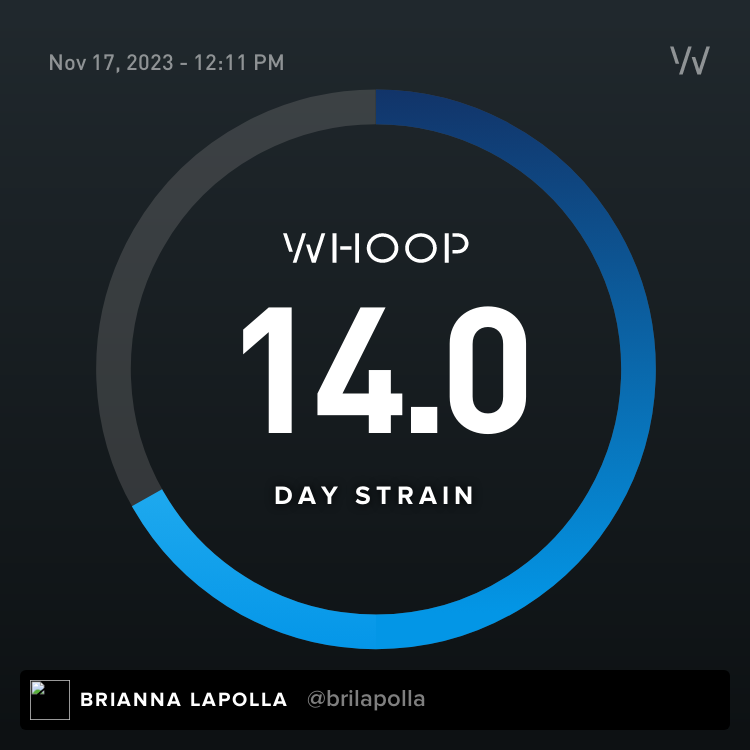
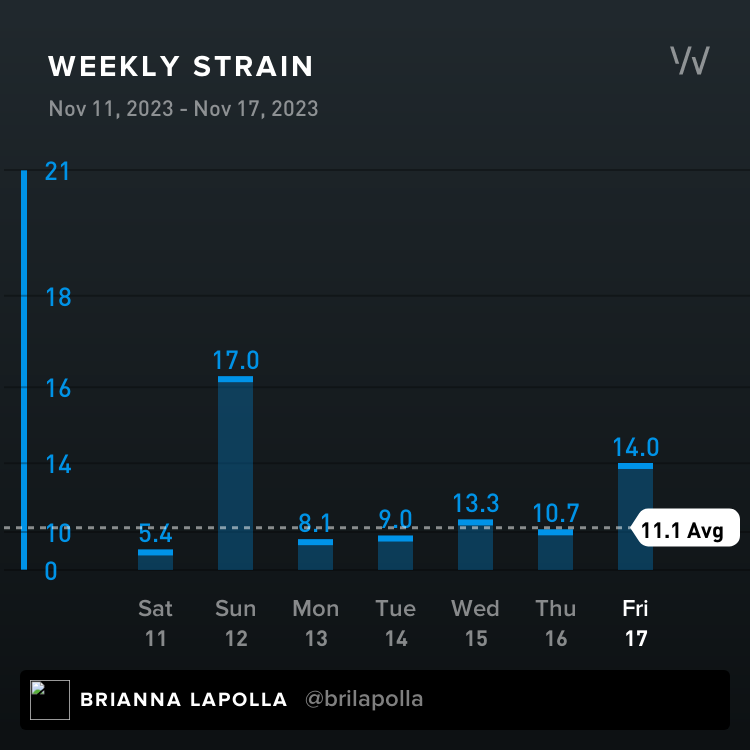
Recovery
Recovery, or how primed your body is to take on the day’s Strain, is measured by analyzing four key physiological markers: Heart Rate Variability (HRV), Resting Heart Rate (RHR), sleep, and Respiratory Rate (RR). It also takes into account your SpO2 levels (the percentage of oxygen in your blood) and skin temperature.
Like Sleep and Strain, Recovery also gets its own score each day—calculated in percentages, like Sleep. When you’re in the green, you can push yourself to your limits, yellow indicates that your body is maintaining and ready to take on moderate amounts of Strain, and red indicates that your body is significantly fatigued and you should prioritize rest and recovery over Strain to optimize your health.
Your Recovery score is really an amalgamation of all the above, from strain to stress to lifestyle choices and sleep. This is why you may see a low Recovery score even with good sleep and vice versa.
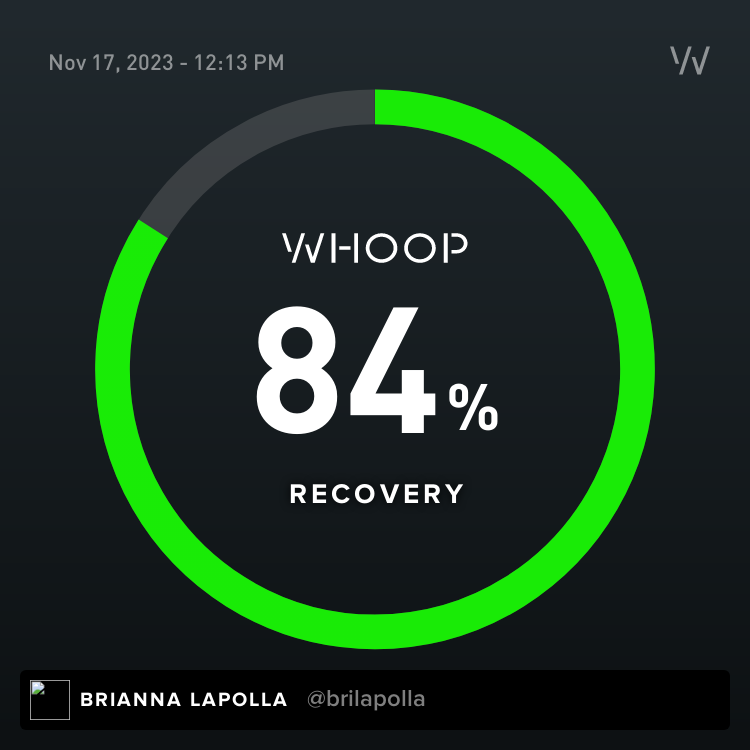
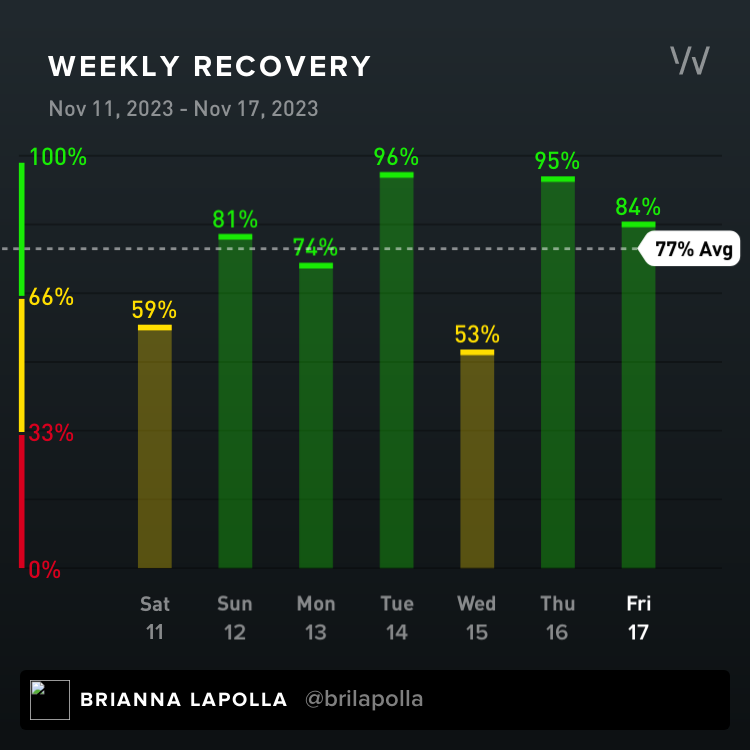
Sophisticated app experience
The amount of data inside the app is extremely impressive. You can choose to keep things surface-level and just look at the big-picture metrics (as stated above), or you can go super deep and read into every little data point. No stone is left unturned inside the WHOOP app. The newest update also features coaching for both Sleep and Strain, offering tips for how to better optimize your performance.
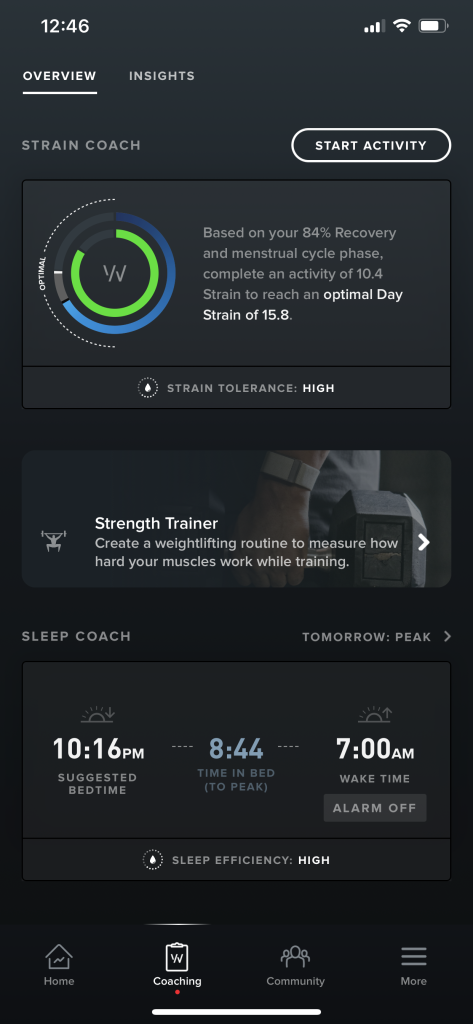
You can also ask the app anything thanks to a beta AI integration. Need ideas for how to hit today’s strain goal? Or want WHOOP to explain HRV? Type it in and you’ll get a response like the one below, with articles for deeper reading.
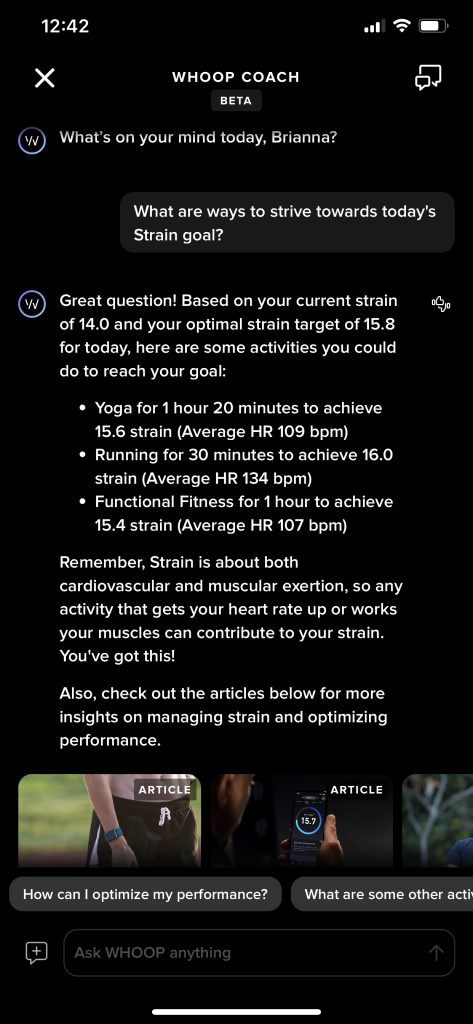

Shockingly long battery life
Shocking is not an understatement. When my Apple Watch only lasts 12 hours on a single charge (I never wear it to sleep, and charge it overnight because of this), and my OURA ring gets about three good days, my WHOOP’s five-day charge takes the cake. It also takes mere minutes to charge completely, and—the best part—the wireless charger slips over the top, so you can charge it while you wear it, which truly makes WHOOP a 24/7 tracker. The charger is also water resistant, so you can hop in the shower, swim laps, do the dishes, or get a sweaty HIIT session in while it charges.
Multiple ways to wear
WHOOP comes standard with a comfortable yet durable SuperKnit band, meant to be worn on your wrist, two inches above your wrist bone (like a watch). However, something it has that none of my other trackers did: versatility. The tracker can be removed from the band and worn in myriad other ways, like in new WHOOP Body apparel, eliminating the need for it to be visible at all. This is beneficial for two reasons: one, you can continue to track your health data even when you don’t want to look like you are (i.e. when you’re at a wedding or a nice dinner), and two, if wrist-based wearables are cumbersome or uncomfortable, you have options. You also have plenty of options when it comes to customizing the look, with 24+ wristband colors to choose from, and multiple clasp finishes.
What’s Not Good About WHOOP?
No screen
As someone who typically wears an Apple Watch, I find myself checking my wrist multiple times a day, only to stare at my WHOOP’s displayless face with a twinge of disappointment. If there was a screen on my WHOOP, it wouldn’t be large enough to view the robust amount of data that’s in the app, but even being able to see how I’m tracking against strain, heart rate, or steps would be welcome. I don’t love having to use my phone for everything in life, and WHOOP is another thing added to that list.
The lack of a screen also makes it hard to understand how hard I’m pushing myself during a workout (by checking my heart rate, for instance). And it’s impossible to do timed interval runs without also wearing an Apple Watch, which is one wearable too many for me.
Data slow to load
In order for your data to populate in the WHOOP app, it must be open and running on your phone 24/7. This would be fine, but I have the compulsion to close all my apps every time I put my phone down, which results in my data being hours behind. When I do open the app to check my metrics, it can take extremely long (depending on how long it’s been since the data last synced)—and I just don’t always have 10 minutes (ok, maybe five) to spare waiting around for my info to load. We live in a world of instant gratification, so give me instant gratification!
Issues with auto-detected workouts
This may be a me problem, but I find that my WHOOP isn’t as sensitive to picking up workouts as my OURA ring and Apple Watch are. It doesn’t detect my dog walks at all (which, fair—my French Bulldog stops to smell every single leaf and my heart rate barely climbs), and sometimes doesn’t even detect my full-blown interval runs. Just this morning, I did around 3 miles on the treadmill and decided not to wear my Apple Watch or OURA ring—big mistake. My WHOOP didn’t detect the workout (though it still detected my heart rate and added the data to my Strain score for the day), which makes me feel like I didn’t even work out. I did a strength workout following my run and tracked it via my Apple Watch, and it imported into my WHOOP app, but I’m 95 percent sure my WHOOP wouldn’t have detected it on its own. It should be mentioned that you can start and track workouts via the app, but who wants to go into the app and click track before every new workout? This is a huge detractor for me.
The Bottom Line
Despite the lack of screen and the less-than-optimal data load times, WHOOP is clearly a superior health tracker. It puts your health into your own hands, arming you with all the data you need to perform at your best—or the permission you need to prioritize recovery.


